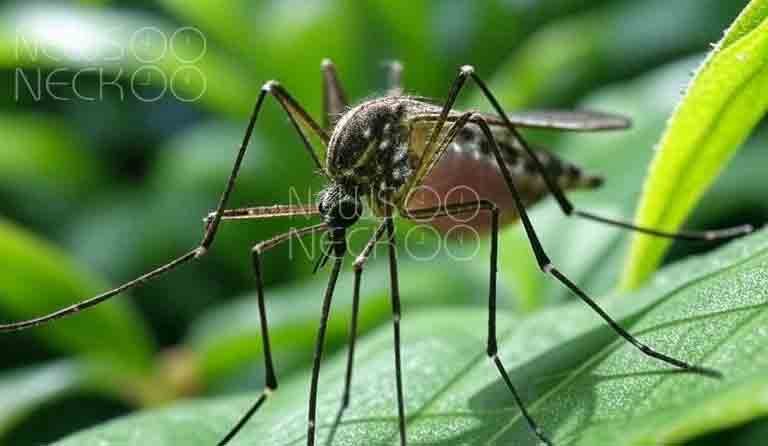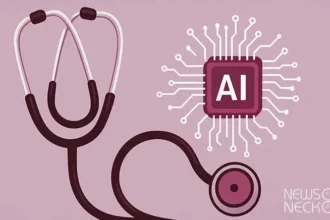Remember COVID-19? The lockdowns, the masks, the global anxiety – it was a stark reminder that something as simple and pervasive as a virus could disrupt our entire world. Governments shut down cities, stock markets trembled, and life fundamentally changed overnight for billions of people.
Now, brace yourself. A different kind of threat is emerging from China, potentially just as disruptive but far less talked about… so far. It’s Chikungunya virus– a viral disease you might think only exists in feverish travel advisories or obscure medical textbooks. But recent reports suggest its back with a vengeance, sparking intense concern and even bizarre conspiracy theories.
Chikungunya virus is an alphavirus transmitted to humans primarily by the Aedes mosquito, specifically the tiger mosquito (Aedes albopictus) and sometimes the Asian tiger mosquito (Aedes aegypti). These are the same mosquitoes responsible for spreading Dengue, Zika, and Yellow Fever. When an infected mosquito bites you or me, it injects the virus into our bloodstream.
But unlike its cousins COVID-19 (which is airborne) or influenza (also spread via respiratory droplets), Chikungunya virus isn’t just a “novelty” bug that spreads from person to person easily in crowded places. Its transmission requires direct contact with infected mosquito saliva during a bite – essentially, it needs the insect vector itself.
This crucial difference means one thing: this virus cannot replicate and spread efficiently among humans like COVID did. You can’t get Chikungunya virus from shaking hands with an asymptomatic carrier or sitting near someone who’s infected in a public space (unless they are bleeding or have broken skin, though that’s rare). That’s the fundamental reality.
So why is it causing such alarm bells, especially originating again from China?
Let’s look at the latest unsettling data. In just the second quarter of 2025, Guangdong province in Southern China reported over 7,000 confirmed cases of Chikungunya virus infection. That’s a staggering number – far higher than any other part of China during this time and significantly larger compared to previous years or global totals outside specific hotspots.
This isn’t just an abstract problem for Beijing. The Chinese government has reportedly rolled out some extraordinary measures, reminiscent (though thankfully less dramatic) of pandemic responses but applied specifically against a mosquito-borne illness:
- Mass Spraying Operations: They’ve launched extensive campaigns spraying buildings and public areas with parricides or other agents targeting the mosquito larvae at their source. Imagine entire neighborhoods being treated like one might disinfect during an influenza scare, but focused on stopping mosquito breeding.
- Rigorous Travel History Checks: Public health officials are reportedly cross-referencing travel histories for Chikungunya cases meticulously. Think of it as a targeted version of contact tracing: understanding where infected mosquitoes came from is key to containment.
- Localized Lockdowns and Restrictions: Areas with significant outbreaks are facing targeted restrictions, including movement controls or heightened surveillance, not nationwide shutdowns like in 2020.
- Drone Deployment: Yes, even drones! Reports suggest aerial spraying programs using drone technology have started to combat the spread by targeting hard-to-reach areas where mosquitoes might breed.
And here’s something truly unique and perhaps less understood: a novel biological approach is being explored – breeding special fish that can eat mosquito larvae. It sounds almost like science fiction!
These measures aren’t just happening in China, however. Chikungunya virus has exploded globally, often linked to travel from Africa or Asia.
- Brazil, part of the BRICS group (Brazil, Russia, India, China, South Africa), reported upwards of 400,000 cases recently – a significant jump compared to earlier years and concentrated mainly in tropical areas.
- South Africa saw more than 5,000 cases emerge.
- Closer to home for some readers, scattered cases also appeared in India, another major player in BRICS.
This widespread occurrence naturally fuels intense discussion and speculation. And let’s be honest, it shouldn’t. Uncovering the truth behind outbreaks is vital. Unfortunately, alongside genuine scientific concern, there has also been a rise – even within certain circles – of bizarre conspiracy theories about Chikungunya.
Here are three of the more prominent ones circulating:
Conspiracy Theory 1: The BRICS Target?
This theory claims that Chikungunya’s recent resurgence is specifically designed or targeted to impact only the BRICS countries (Brazil, Russia, India, China, and South Africa). Proponents point out the high number of cases in Brazil and China alongside relatively lower reports elsewhere.
The Logic: If a coordinated effort against these specific nations was underway, one might expect Chikungunya activity to be deliberately suppressed or contained outside this bloc. The supposed logic is that since Russia (largely northern), Canada, the UK, France, Germany, and many Western European countries report significantly fewer cases, they are somehow immune or protected.
The Flaw: This ignores basic epidemiology and climate suitability. Aedes mosquitoes thrive in warm climates – tropical and subtropical regions globally. While transmission might be lower now, it happens regularly during warmer months in Southern Europe (like Spain), North Africa, California, Florida, etc., as well as the major BRICS hotspots.
The Reality: Chikungunya is a natural disease pattern dictated by climate and mosquito breeding opportunities. It spreads where mosquitoes are present and people travel from endemic areas or live locally during outbreaks.
Conspiracy Theory 2: The China Slowdown Strategy?
This theory directly contrasts the economic narratives of China and the United States. It highlights that between 2018 and 2023, while China’s average annual GDP growth was around 5%, the US saw a much lower rate near 2.6%.
The Premise (as alleged): With expected growth rates for the US projected at just 1.6% in 2025 and China anticipated to grow slightly less dramatically, perhaps slowing down Chikungunya is part of a hidden agenda by countries like the US – maybe even globally – to impede China’s rise.
The Problem: This narrative completely misunderstands how diseases spread and are controlled. Viruses don’t target specific economies for disruption based on political strategy (unless it’s weaponized, which Chikungunya isn’t). Disease outbreaks have devastating impacts regardless of the size or economic power of any nation. Stopping a disease is an act of compassion and global health responsibility, not a targeted slowdown tactic.
The Reality: Controlling infectious diseases is essential for public health everywhere, including major economies like China. Ignoring it because you believe political motives would be unethical and dangerous.
Conspiracy Theory 3: The Billionaire Bio-Weapon?
This theory points to the Bill & Melinda Gates Foundation’s funding of OXITEC, a company involved in genetic modification of mosquitoes globally. OXITEC works on releasing genetically modified male mosquitoes (in projects like “Project Abu Dhabi”) designed either to pass on a lethal trait or make them sterile. This program has been implemented in places like Brazil and the Cayman Islands specifically for Dengue control, not Chikungunya.
The Conspiracy: The theory suggests OXITEC’s mosquito program, funded by Bill Gates’ philanthropy, is actually being used as a tool to combat Chikungunya. However, it paradoxically argues that this very same technology, which has been deployed in Brazil against Dengue, might be the source of the recent spike in Chikungunya cases there (400,000). The reasoning goes: “Why would they use modified mosquitoes if they already know about natural diseases like Chikungunya?”
The Rebuttal: This is a classic case of misunderstanding complex scientific efforts. Genetic modification research is happening to fight Dengue and other vector-borne diseases, including Malaria and potentially Chikungunya in the future. Furthermore, OXITEC’s projects are designed for specific viruses – Dengue primarily, then Zika – often introduced by local vectors or imported cases. They don’t intentionally “spread” new diseases like Chikungunya.
The confusion seems to stem from mixing these different initiatives and wrongly assuming a hidden purpose behind funding mosquito control programs.
The Reality: OXITEC is working on reducing the impact of specific known diseases, not creating new ones or deploying vague biological threats. Their goal in Brazil was specifically for Dengue prevention.
Beyond the Buzz: What We Actually Know About Chikungunya
While it’s true that Chikungunya virus isn’t transmissible between humans like a respiratory virus, its bite can be intensely painful and debilitating.
Symptoms: A person bitten by an infected mosquito might develop sudden fever (often high), intense joint pain (which can be crippling) often accompanied by swelling, headache, muscle aches, back pain, and sometimes a rash. The joint pain is typically severe but not chronic like arthritis – it usually passes once the infection clears, though recovery can take weeks.
Severity: Most infections aren’t fatal, but they can cause prolonged suffering for many people (up to two weeks or more). This significantly increases healthcare burdens in affected areas and highlights its potential as a public health threat. Globally, understanding and preventing Chikungunya outbreaks is critical.
So, let’s cut through the noise. The current panic seems overblown by these unverified theories precisely because Chikungunya isn’t COVID-19 2.0 in terms of transmission or political implications.
It’s a serious disease with the potential to cause widespread suffering if it spreads unchecked – especially as mosquitoes expand their range due to climate change, urbanization, and global travel. We need robust surveillance, mosquito control programs (like China is doing), research into vaccines and treatments, and public education about prevention measures like eliminating stagnant water.
The debate around genetic modification or biological agents for disease control needs careful scientific scrutiny – not dismissal as “conspiracy.” These are complex tools with significant ethical implications that require transparent international oversight. Funding from sources like the Gates Foundation to combat diseases affects everyone equally; it’s a shared human problem.
Looking Ahead: The Next Global Challenge?
The fact remains: Chikungunya virus is spreading rapidly in certain regions, sometimes undetected or treated as an annoyance rather than a major crisis. It’s not just limited to BRICS countries because they aren’t the only places with suitable climates and populations.
We should be concerned about its potential impact globally, including Europe where summer temperatures create ideal breeding conditions for Aedes mosquitoes. But we shouldn’t chase wild theories that distract from the real solutions: better prevention, faster detection, more resources allocated appropriately to fight diseases wherever they strike.
Next time you hear about a “new virus,” ask yourself if it spreads through mosquito bites or human contact. Chikungunya virus is indeed emerging again with force – but its transmission mode and potential targets are shaped by biology and environment, not geopolitical games.
It’s a reminder that the world faces diverse health threats beyond respiratory pandemics. The silent march of arboviruses (virus transmitted by insects) requires our attention now more than ever.
For more articles and news updates, Visit newsneck












